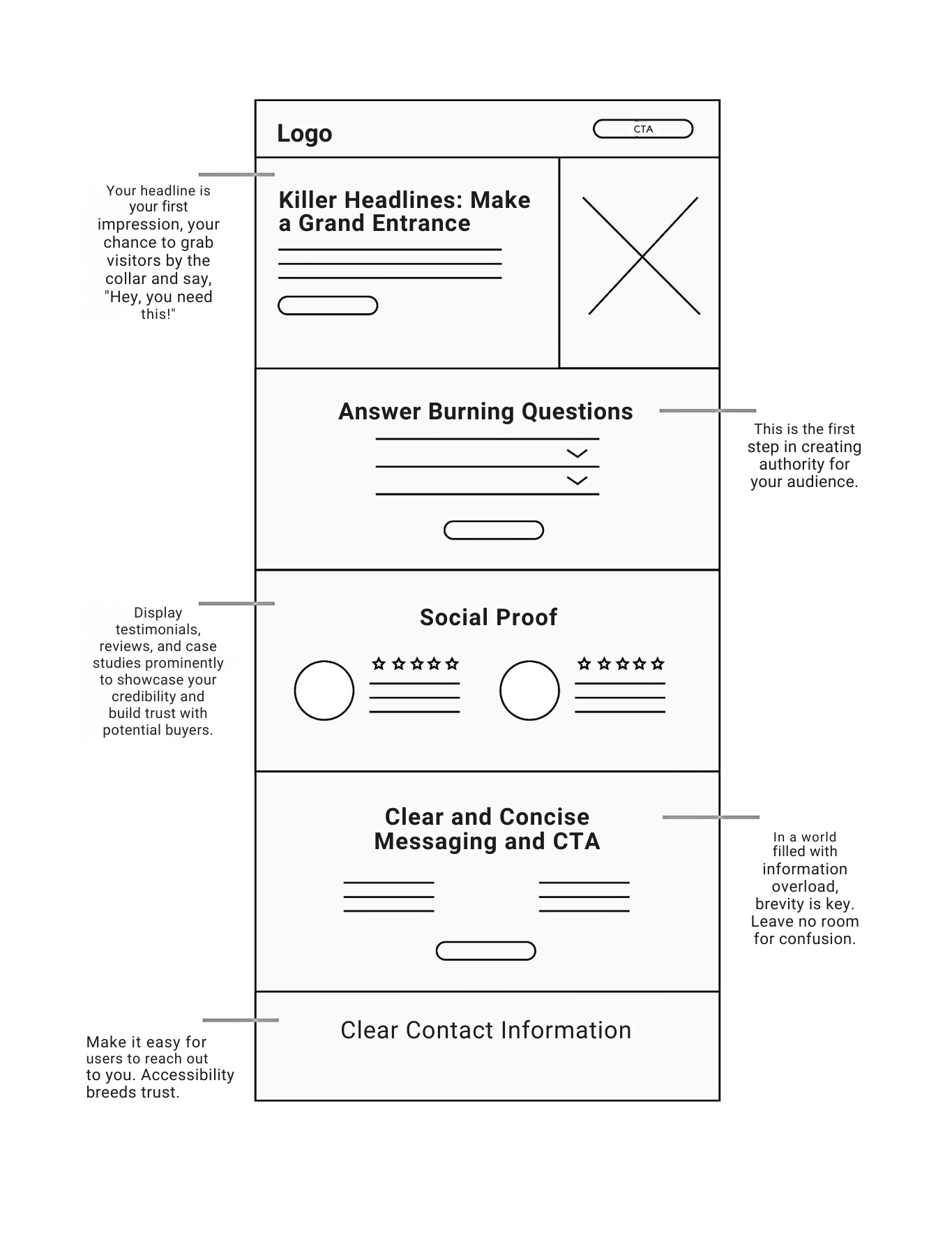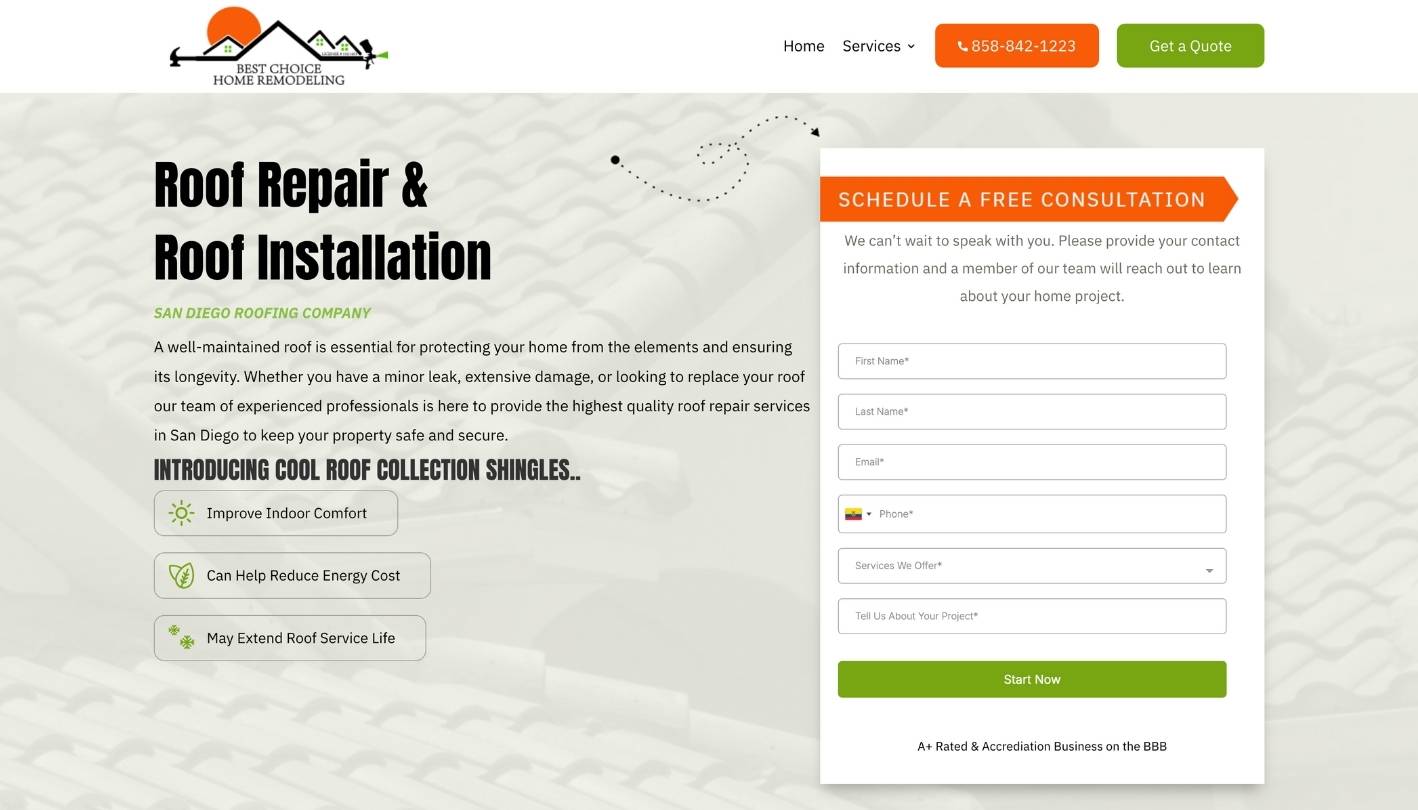
Valid leads generation from the roofing business is the surest way to grow your business. Essentially, roofing leads are potential buyers whom a roofing company makes them known and later on converts them into paying clients. Being in a crowded market means it will take some innovative and clear multi-channel approach to help you stand out and gain the attention of property owners. In this article, we unleash some necessary and tested roofing lead generation strategies and give you necessary actionable insights to help your business attract, nurture, and convert leads effectively.
1.- What is Roofing Lead Generation ?
Roofing lead generation is about drawing and capturing the interest of property owners or commercial property owners in need of roofing services in the form of roofing installations, repairs, inspections, or maintenance.
Effective lead generation of roofing services effectively melds various means of digital marketing techniques for a wide reach of people, establishing trust and encouraging inquiries from possible customers.
Before describing the strategies, it is very important to understand that not all leads are created equal. The lead generation could bring up two types of leads:
Qualified Leads: Those people or businesses who are actually in need of roofing services and are ready to make a buying decision. This is the valuable kind of lead since it is likely to convert.
Cold Leads: Individuals or businesses who may not immediately need roofing services but are interested. They will need to be incubated over time to convert them into paying customers.
The generation of roofing leads will, therefore, provide a regular flow of qualified leads to make the growth in business sustainable.
The following strategies offer actionable insights to help roofing companies reach a wider audience, nurture potential customers, and increase conversion rates, paving the way for steady and sustainable business expansion.
2.- Build a High-Converting Roofing Website
Professional websites remain some of the most effective tools in lead generation for roofing. This is generally the first thing that potential clients will see when it comes to your business.
Your website should spell out your services, show examples of projects you have done in the past, and really try to convey credibility and reliability in your company.
Key components of a high-performing roofing website include:

To maximize lead generation and conversion rates, a roofing website needs specific, well-designed elements that attract and retain visitors. Here are the essential components:
2.1.- Compelling Headline and Sub-Headline
The headline is the first thing visitors see, and it should immediately capture their attention and make them want to learn more.
Use a clear, benefit-driven headline that speaks directly to the visitor’s needs—such as “Protect Your Home with Expert Roofing Services.” The sub-headline should reinforce this value by briefly explaining what sets your roofing services apart, like “Affordable, Reliable, and Professional Roofing Solutions.” Avoid overly complex or confusing language; instead, keep the message straightforward to make a lasting impression within seconds.
2.2.- High-Quality Images or Video
Images and videos are essential for capturing and holding attention on your site. Use high-quality visuals, like before-and-after photos of roofing projects, team photos, or short video testimonials, to build credibility.
Research shows that visuals are processed far faster than text and are more engaging. A carefully chosen image or video can help establish trust and encourage visitors to explore further, while low-quality or irrelevant visuals can detract from the overall impression of professionalism.
2.3.- Strong Call-to-Action (CTA)
The CTA is one of the most crucial elements for conversion. It directs visitors on what action to take next, whether it’s scheduling a consultation, requesting a free quote, or calling for emergency repairs.
Ensure your CTA buttons are clear, visually distinct, and persuasive. Use actionable text like “Get a Free Quote Today” or “Schedule Your Inspection Now.” Make your CTAs visible throughout the site to encourage conversions, and test different CTA placements to find what performs best.
2.4.- Important Information Above the Fold
“Above the fold” refers to the area of your webpage that is visible without scrolling. Place key information—such as your main headline, CTA, and contact details—above the fold to capture visitor interest immediately.
Since visitors typically decide within seconds whether they want to stay on a site, think of this area like a billboard on a highway: it needs to convey the essential information quickly and persuasively to prompt users to scroll down and engage.
2.5.- Clear and Concise Service Descriptions
Your website should clearly explain the services you offer in a way that’s easy for visitors to understand. Use concise, straightforward language that highlights the benefits of each service, whether it’s roof repair, maintenance, or installation. Avoid jargon that may confuse visitors. Effective service descriptions guide potential clients through your offerings, making it easier for them to find what they need and understand why your roofing company is the best choice.
2.6.- Testimonials and Client Reviews
Testimonials are powerful tools for building trust. Display positive feedback from satisfied clients, ideally including full names, photos, and specific results or outcomes. This gives social proof that your company delivers quality results and helps reassure potential clients. Video testimonials, if available, can be even more effective, as they add a layer of authenticity and personal connection.
2.7.- Trust Signals and Badges
Trust elements, such as certifications, security badges, and affiliations with industry organizations, reassure visitors that your business is credible and trustworthy. For roofing companies, showcasing affiliations with reputable brands or suppliers can also boost confidence in your business.
2.- Invest in Search Engine Optimization (SEO)
Search Engine Optimization (SEO) is essential for increasing your roofing business’s online visibility. A well-optimized website helps your business appear higher in search engine results pages (SERPs), making it easier for potential customers to find you when they search for roofing services. With the right SEO strategy, your website can attract more organic traffic, ultimately leading to more inquiries and higher conversion rates.
Here are some key SEO tactics specifically tailored for roofing companies:
2.1 Keyword Optimization
Keywords are the foundation of SEO. For a roofing business, it’s essential to identify and target keywords that potential customers are actively searching for.
These keywords could include terms like “roof repair near me,” “roofing company in [city name],” “residential roofing,” and “commercial roof installation.”
Conduct Keyword Research:
Use tools like Google Keyword Planner, Ahrefs, or SEMrush to identify relevant keywords with high search volume and manageable competition. Focus on long-tail keywords (e.g., “affordable roof repair in [city]”) that reflect specific customer intent and often convert better.
Optimize Page Titles and Meta Descriptions:
Include primary keywords in your page titles, meta descriptions, and headers. These elements not only help search engines understand your content but also improve click-through rates (CTR) by signaling relevance to potential customers.
Optimize Service Pages:
Make sure each service page (roof repair, installation, maintenance) is optimized with targeted keywords. Avoid “keyword stuffing” by naturally incorporating keywords within informative, valuable content.
2.2 Local SEO
Local SEO is particularly valuable for roofing companies, as most customers will be looking for a roofing provider within their immediate area. Optimizing for local search can help your business appear in “near me” searches, as well as in the local pack (Google’s local listings section), increasing your visibility to nearby potential customers.
Google My Business (GMB) Profile:
Create or claim your Google My Business profile. Ensure that all information—such as your business name, address, phone number, and website—is accurate and up-to-date. Regularly update your profile with new photos, posts, and customer reviews.
Location-Specific Content:
Add location-based keywords to your website’s content, like city names or neighborhoods you serve. For example, include phrases like “roofing services in [City]” or “roof repairs near [Area].”
2.2 Local SEO
Local SEO is particularly valuable for roofing companies, as most customers will be looking for a roofing provider within their immediate area. Optimizing for local search can help your business appear in “near me” searches, as well as in the local pack (Google’s local listings section), increasing your visibility to nearby potential customers.
Google My Business (GMB) Profile:
Create or claim your Google My Business profile. Ensure that all information—such as your business name, address, phone number, and website—is accurate and up-to-date. Regularly update your profile with new photos, posts, and customer reviews.
Location-Specific Content:
Add location-based keywords to your website’s content, like city names or neighborhoods you serve. For example, include phrases like “roofing services in [City]” or “roof repairs near [Area].”
Example with New Jersey Roofers
Let’s say your roofing company serves various towns across New Jersey. Here’s how you might craft content for specific locations:
-
Service Area Page: Create a dedicated page for each city or neighborhood you serve. For example:
- Page Title: “Roofing Services in Jersey City, NJ – Professional & Reliable Contractors.”
- Meta Description: “Looking for roofing experts in Jersey City, NJ? We provide roof repairs, installations, and inspections for homes and businesses. Call us for a free estimate!”
- Body Content Example:
- “At [Your Business Name], we proudly serve Jersey City, NJ, offering a wide range of roofing services tailored to the unique needs of the area. Whether you need shingle repairs after a harsh winter storm or a full roof replacement to improve your home’s energy efficiency, we’ve got you covered. Our team understands the local weather patterns and building codes, ensuring your roof is built to last. Contact us today for expert roofing services in Jersey City and the surrounding Hudson County neighborhoods.”
-
Neighborhood-Specific Content: Mention smaller neighborhoods or landmarks within a city to make your content even more relevant.
- “From the Heights to Greenville, our roofing team has extensive experience working on homes throughout Jersey City. Whether it’s a historic brownstone in Downtown or a family home in the Bergen-Lafayette area, we deliver top-quality roofing solutions tailored to your property’s needs.”
-
FAQs Section for Local Areas:
- “Do You Offer Roof Repairs in Hoboken?”
- Answer: “Yes, we serve Hoboken and the entire Hudson County area. Our expert roofing contractors provide quick, reliable repairs to address leaks, storm damage, and more.”
- “Can You Help With Roofing Permits in New Jersey?”
- Answer: “Absolutely. We are familiar with the roofing permit process in New Jersey towns like Newark, Trenton, and Jersey City, and we handle all necessary paperwork for you.”
- “Do You Offer Roof Repairs in Hoboken?”
2.2 Local SEO
Local SEO is particularly valuable for roofing companies, as most customers will be looking for a roofing provider within their immediate area. Optimizing for local search can help your business appear in “near me” searches, as well as in the local pack (Google’s local listings section), increasing your visibility to nearby potential customers.
Google My Business (GMB) Profile:
Create or claim your Google My Business profile. Ensure that all information—such as your business name, address, phone number, and website—is accurate and up-to-date. Regularly update your profile with new photos, posts, and customer reviews.
Location-Specific Content:
Add location-based keywords to your website’s content, like city names or neighborhoods you serve. For example, include phrases like “roofing services in [City]” or “roof repairs near [Area].”
Related Posts





